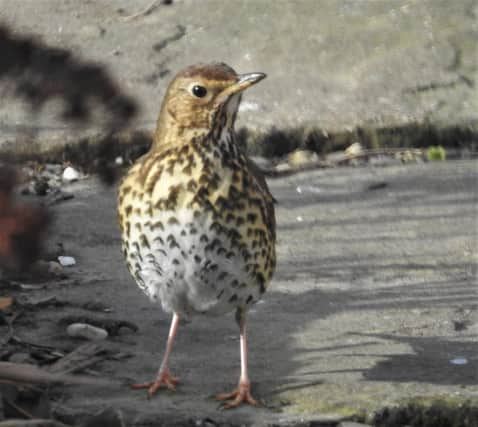Wildlife Column: My garden welcomes song thrush


Possibly one reason was that the song thrush was less effective at adapting to urban and garden habitats.
However, in recent years the song thrush, smaller and warmer coloured than the grey mistle thrush, has shown welcome signs of an increase.
Advertisement
Hide AdAdvertisement
Hide AdSo, I was pleased but not totally surprised to find a scattering of snail shell fragments near some stones in the garden; a sure sign of a feeding song thrush.
A friend of the gardener, they just love snails and the easiest way to eat them is to crack open the shells on hard stones or rocks.
Song thrushes do well in habitats where snails are plentiful and for many species that means somewhere with limey soils that help make the hard shells.
They like sites such as grasslands along limestone chipping railway lines for example, and also in gardens where soils are not too acidic.
Advertisement
Hide AdAdvertisement
Hide AdThe next day, sure enough, the song thrush appeared on the garden path and in quick succession caught and smashed at least three snails.
Whilst hunting and feeding the song thrush is very active and, barely resting, is constantly on the move.
In winter especially, the days are short and cold weather limits snail activity too; so the song thrushes are very busily occupied in a restless search for prey.
Later in the day when I went out to inspect the area the evidence of broken snail shells was all around.
Advertisement
Hide AdAdvertisement
Hide AdThere were a couple of the large garden snails and quite a few yellow and brown fragments of banded snails; a veritable feast for a thrush.
The thrushes generally are now in full song and especially in the early morning and late afternoon into evening gardens, parks and woodlands ring out to their music.
The song thrush finds a good vantage point from which to sing its loud, melodic but rather unvarying tune consisting of a range of notes each repeated three times.